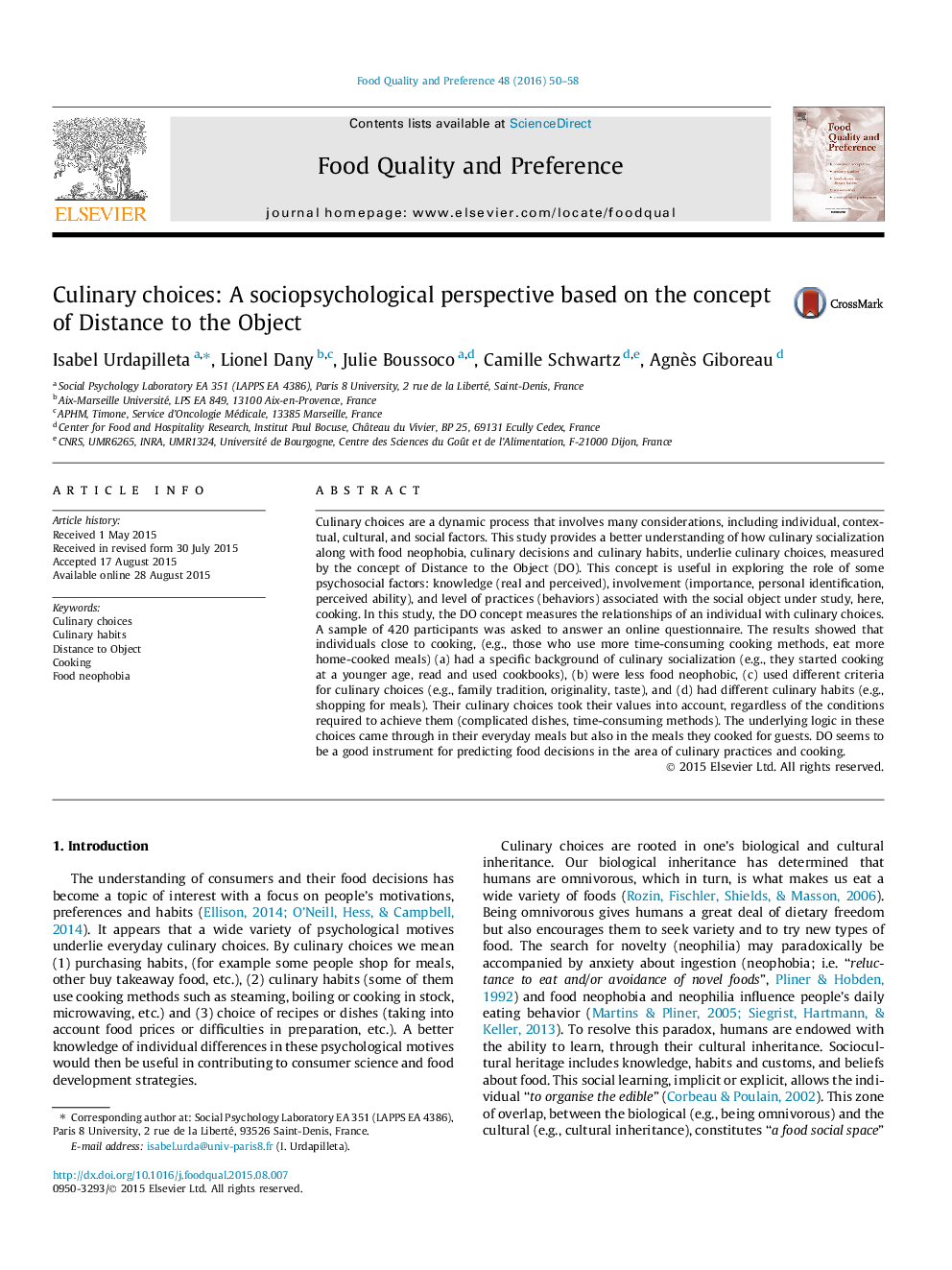| Article ID | Journal | Published Year | Pages | File Type |
|---|---|---|---|---|
| 6261177 | Food Quality and Preference | 2016 | 9 Pages |
â¢We study how culinary socialization underlies culinary choices.â¢We explore the role of the concept of “distance to the object”.â¢Individuals “close to cooking” had a specific background of culinary socialization.â¢Individuals “close to cooking” had a specific were less food neophobic.â¢Individuals “close to cooking” used different criteria for culinary.
Culinary choices are a dynamic process that involves many considerations, including individual, contextual, cultural, and social factors. This study provides a better understanding of how culinary socialization along with food neophobia, culinary decisions and culinary habits, underlie culinary choices, measured by the concept of Distance to the Object (DO). This concept is useful in exploring the role of some psychosocial factors: knowledge (real and perceived), involvement (importance, personal identification, perceived ability), and level of practices (behaviors) associated with the social object under study, here, cooking. In this study, the DO concept measures the relationships of an individual with culinary choices. A sample of 420 participants was asked to answer an online questionnaire. The results showed that individuals close to cooking, (e.g., those who use more time-consuming cooking methods, eat more home-cooked meals) (a) had a specific background of culinary socialization (e.g., they started cooking at a younger age, read and used cookbooks), (b) were less food neophobic, (c) used different criteria for culinary choices (e.g., family tradition, originality, taste), and (d) had different culinary habits (e.g., shopping for meals). Their culinary choices took their values into account, regardless of the conditions required to achieve them (complicated dishes, time-consuming methods). The underlying logic in these choices came through in their everyday meals but also in the meals they cooked for guests. DO seems to be a good instrument for predicting food decisions in the area of culinary practices and cooking.
